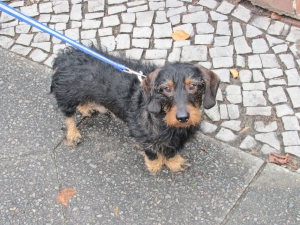 You hear that chirp in the brisk morning of January and you say “what?” And for good reason. You wouldn’t be caught dead outside with three coats, two socks, a hat, mittens, all while you’re standing directly on top of an open fire.
You hear that chirp in the brisk morning of January and you say “what?” And for good reason. You wouldn’t be caught dead outside with three coats, two socks, a hat, mittens, all while you’re standing directly on top of an open fire.
Baby … it’s cold outside!
So what on earth are those birds doing up north. They have no job, no reason to stay here. Most birds fly south for the winter, don’t they? So what gives?
Here’s what gives.
Birds typically migrate south for the winter for food, not because they’re chilly. Apparently they’re tougher than the food they eat (or they don’t like eating tough, frozen grubs), because they can handle freezing weather. Worms and bugs are another story.
In fact, birds have no problem with low-dipping temperatures. They’re far more equipped for the cold days then a snowboarder in Colorado. They store fat during the winter to help keep themselves warm, and fluff their feathers at night to trap heat. Their little birdy feet are covered in a scale-like substance, and feature a ton of veins and arteries that help keep these feet warm on cold wires and pavement. They even conserve energy by slowing down their metabolism, meaning they have far more control over their bodies than us lowly humans.
If there is enough food up north for birds, they’ll likely stay. Why not? That’s a mighty long trip down south, just to come back up north in a few months. Robins, blue birds, finches and other birds will stick around if they have the opportunity to. It just so happens food becomes scarce during this time of year (which is why you see news reports of so many bears making their way into communities).
Want to help a birdy out?
Chances are if you hear a plethora of birds in your yard, you have a pretty killer tree that’s home to a year-round source of nutritious yumminess for birds. Consider yourself a contributor to a bird not having to travel so far for food. Yay. Looking to help that birdy out now that he’s committed to sticking through the cold winter with you? Bird houses are still very much in use during winters and, in fact, can help encourage birds to stay up in your neck of the woods. Not only do these houses serve as a source of food, but they also double up as shelter. In fact, it’s not uncommon to find more than a dozen birds in one house during a cold night.
And, if you want to be extra nice to your bird friends, add a little peanut butter to their birdhouse. There’s a myth that peanut butter is bad for birds because it’ll get stuck in their throats. But that’s untrue. In fact, peanut butter has a high level of fat (good fat, for all you health “nuts”), that is ideal for birds during the winter. And if you, like many birds out there, migrate south for the winter and are afraid that you’ll starve birds who rely on your feeder … stop. They don’t rely on your feeder to survive. Your feeder is just the really warm coffee shop on the corner of a street that’s aligned with food trucks. The food’s out there for the birds. They’ll survive with or without you.
But a little peanut butter would be nice.





